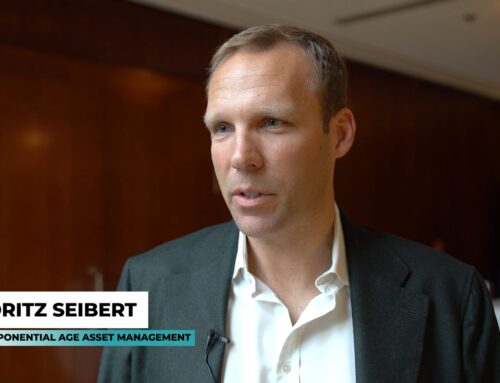Gregory Zuckerman’s book “The man who solved the market” ranks high among our favorite trading books (other books which we like and recommend can be found here).
George Coyle and I have collected what we believe are some of the most interesting passages and quotes from this book. Anyone who’s remotely interested in RenTec will find those valuable, and we’re happy to share them with you through this blog post, which we decided to split into two parts. This is part 2.
Subscribe here if you’d like to receive similar posts and stay up-to-date on all Two Quants publications.
Part 2
What follows are excerpts from Gregory Zuckerman’s book.
- Simons was challenging them to solve yet another vexing problem: Given the range of possible trades they had developed and the limited amount of money that Medallion managed, how much should they bet on each trade?
- Laufer began developing a computer program to identify optimal trades throughout the day, something Simons began calling his betting algorithm.
- Profitable trade ideas are only half the game; the act of buying and selling investments can itself affect prices to such a degree that gains can be whittled away.
- [RenTec] began developing sophisticated approaches to direct trades to various futures exchanges to reduce the market impact of each trade. Now Medallion could better determine which investments to pursue, a huge advantage as it began trading new markets and investments.
- Having first sent orders to a team of traders five times a day, it eventually increased to sixteen times a day, reducing the impact on prices by focusing on the periods when there was the most volume.
- Jim Simons seemed to have discovered the perfect way to trade commodities, currencies, and bonds: predictive mathematical models. Yet, Simons knew, if he wanted Renaissance Technologies to amount to much of anything, he’d have to get his computers to make money in stocks.
- Frey’s models usually just focused on whether relationships between clusters of stocks returned to their historic norms.
- The problem wasn’t that Frey’s system couldn’t discover profitable strategies. It was unusually good at identifying profitable trades and forecasting the movement of groups of shares. It was that, too often, the team’s profits paled in comparison to those predicted by their model.
- Simons insisted that everyone at the firm actively share their work with each other.
- Brown, Mercer, and the others relied upon Bayesian mathematics.
- Frey’s model—its statistical-arbitrage trades looked great on paper and should have made a lot of money. They never did, though.
- It turned out that Frey’s model made suggestions that were impractical, or even impossible.
- When Nova’s leverage crossed a certain threshold, Frey and staffers manually shrank the portfolio to remain within the necessary limits, overriding their model’s recommendations.
- With Frey’s stock-trading system, failing to get just a few moves done threatened to make the entire portfolio more sensitive to market shifts, jeopardizing its overall health. [Brown and Mercer “fixed” these problems]
- They also made their system adaptive, or capable of learning and adjusting on its own, much like Henry Laufer’s trading system for futures.
- The system repeated on a loop several times an hour, conducting an optimization process that weighed thousands of potential trades before issuing electronic trade instructions. Rivals didn’t have self- improving models; Renaissance now had a secret weapon.
- [RenTec] began holding on to shares a bit longer, two days or so, on average.
- Brown and Mercer retained the prediction model Frey had developed from his Morgan Stanley experience. It continued to identify enough winning trades to make serious money, usually by wagering on reversions after stocks got out of whack.
- Laufer’s key strategies—including buying on the most propitious days of the week, as well as at the ideal moments of the day—remained winners.
- By 1997, though, more than half of the trading signals Simons’s team was discovering were nonintuitive.
- “Volume divided by price change three days earlier, yes, we’d include that,” says a Renaissance executive. “But not something nonsensical, like the outperformance of stock tickers starting with the letter A.”
- By then, Medallion increasingly was relying on strategies that its system taught itself, a form of machine learning.
- A consistent winner, for example, might automatically receive more cash, without anyone approving the shift or even being aware of it.
- Medallion trades about eight thousand stocks. There was no way they could quickly revamp the portfolio.
- After several more all-nighters, a couple of researchers developed a theory about what was causing the problems: A once-trusted strategy was bleeding money. It was a rather simple strategy [momentum]—if certain stocks rallied in previous weeks, Medallion’s system had taught itself to buy more of those shares, under the assumption the surge would continue. For several years, this trending signal had worked, as the fund automatically bought Nasdaq shares that were racing still higher. Now the system’s algorithms were instructing Medallion to buy more shares, even though a vicious bear market had begun.
- They quickly ditched the momentum strategy, stemming the losses. Soon, gains were piling up once again.
- Staffers became excited about developing super-short- term signals to trade in a matter of seconds, or even less, a method that would become known as high-frequency trading. Renaissance’s computers proved too slow to beat others to the market, however. Medallion made between 150,000 and 300,000 trades a day, but much of that activity entailed buying or selling in small chunks to avoid impacting the market prices, rather than profiting by stepping in front of other investors.
- When Medallion spied especially juicy opportunities, such as during a 2002 market downturn, the fund could boost its leverage, holding close to $20 of assets for each dollar of cash, effectively placing the portfolio on steroids.
- Regarding the securities in the basket-options transactions, the most Medallion could lose in the event of a sudden collapse was the premium it had paid for the options and the collateral held by the banks.
- Basket options: They enabled Medallion’s trades to become eligible for the more favorable long-term capital gains tax.
- Medallion faced inexplicable losses. It lost about $90 million in a single day in March; the next day it was $80 million more. Nerves began to fray—until then, Medallion had never lost more than $5 million in a day.
- Mercer remained stoic, interacting with colleagues as if nothing unusual was happening. Not Brown. He had never experienced deep, sudden losses, and it showed. Medallion’s losses now approached $300 million.
- “Trust the model,” Simons told them. “We have to let it ride; we can’t panic.”
Stay safe and #happytrading.





